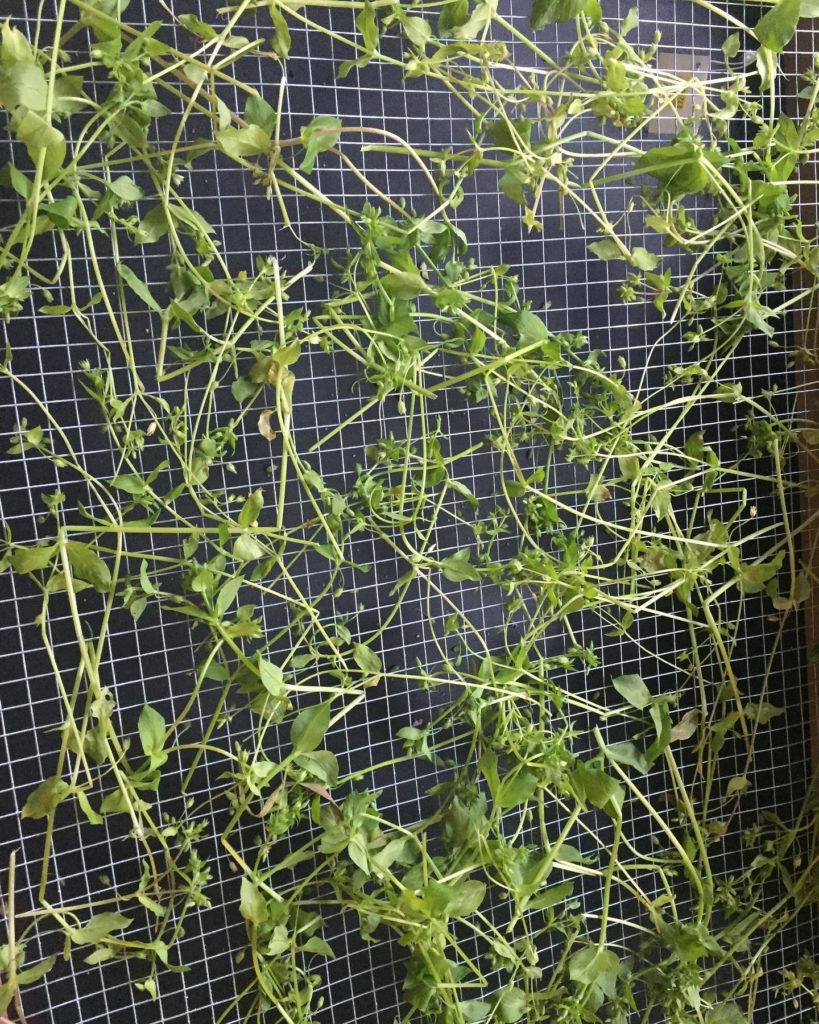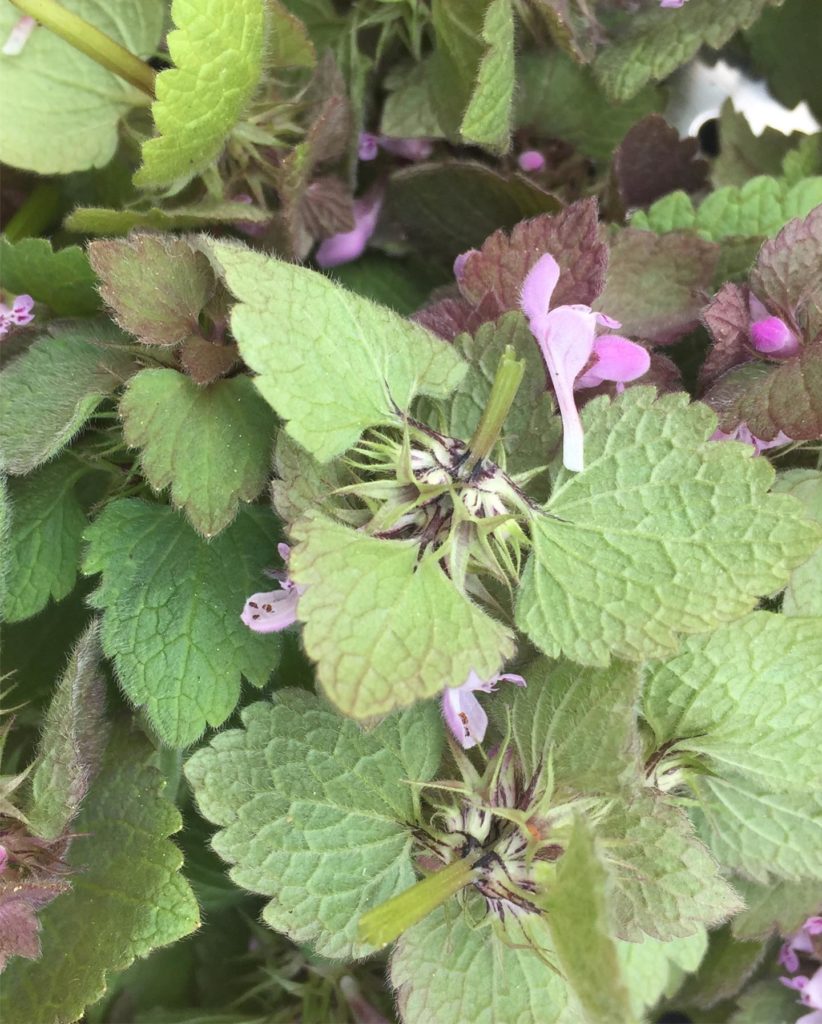It was a calm, beautiful, cloudy afternoon to go on a little herb hunt. Walks sure have gotten a lot more exciting now that I’m trying to identify every plant I see. I love watching the natural world wake up all around us in spring – the scent of poplar buds in the air, daffodils and dandelions blooming, the birds chattering away. A hummingbird built her nest outside our kitchen window and hatched her eggs today for some extra special spring magic.
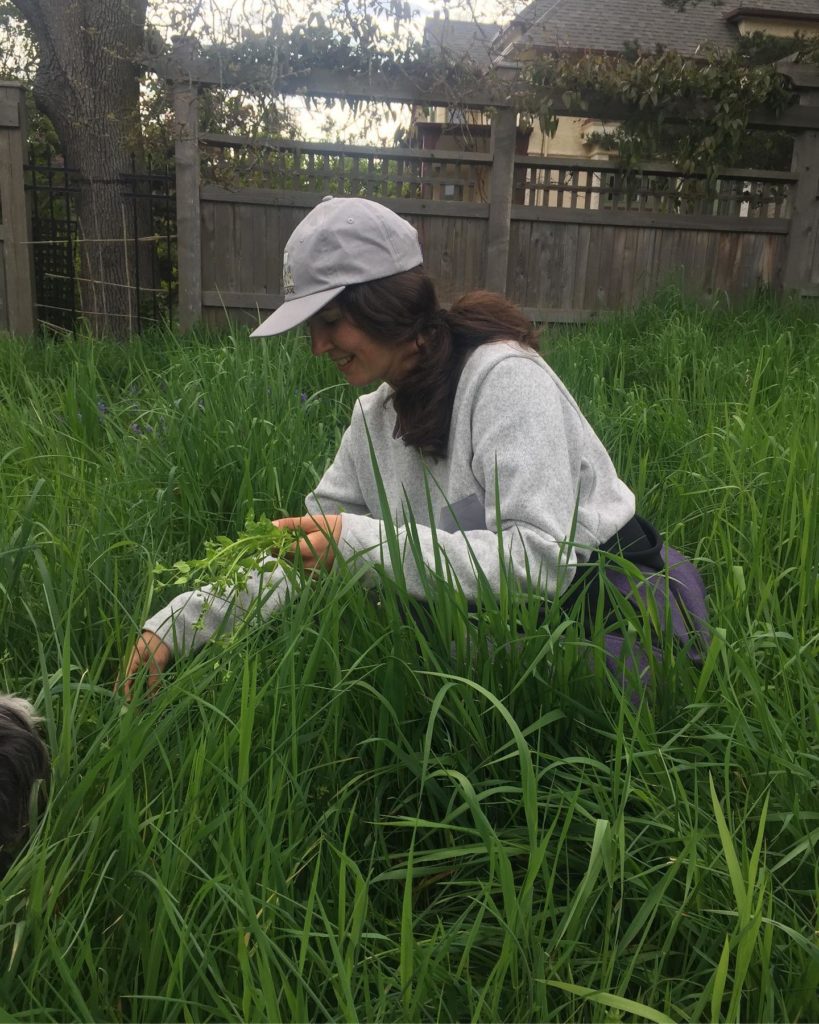
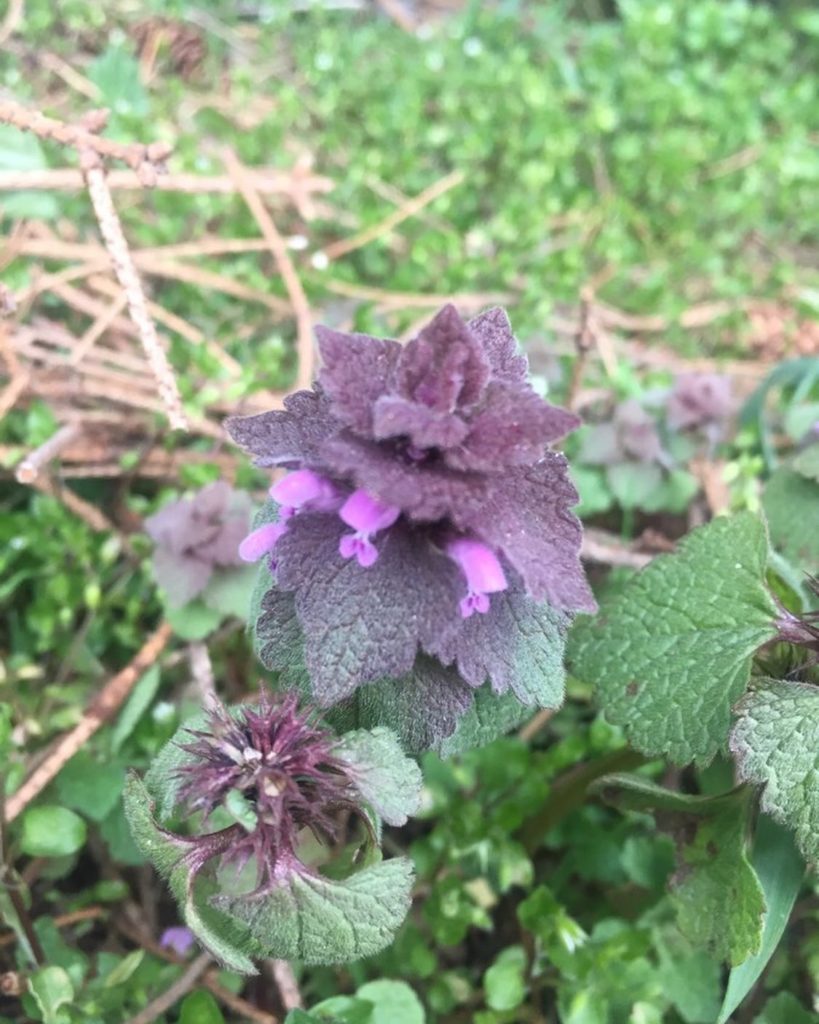
Today I harvested some purple deadnettle and chickweed. Purple deadnettle (Lamium purpureum) is a herbaceous plant from the mint family that has distinctive purple upper leaves. It goes great as a garnish, in a salad, or in wild weed pesto. The leaves are anti-bacterial, anti-viral, and anti-inflammatory, diaphoretic, diuretic, astringent, and purgative. It’s also super nutritious and delicious (though, as it’s a bit fuzzy, I prefer adding it to something rather than eating it on its own).
Chickweed (Stellaria media) is a herb with little white flowers and a line of hairs growing up one side of the stem. It is an especially tasty herb that makes a great anti-itch poultice (chew it right up and stick it right on, folks), increases cell membrane permeability for enhanced nutrient absorption, helps cleanse the blood and break down fat cells, and over time even helps dissolve cysts. I set aside what I didn’t eat to wilt overnight with the intention of making an infused oil and, in turn, a salve, so that I can enjoy its nourishing, soothing qualities all year round.
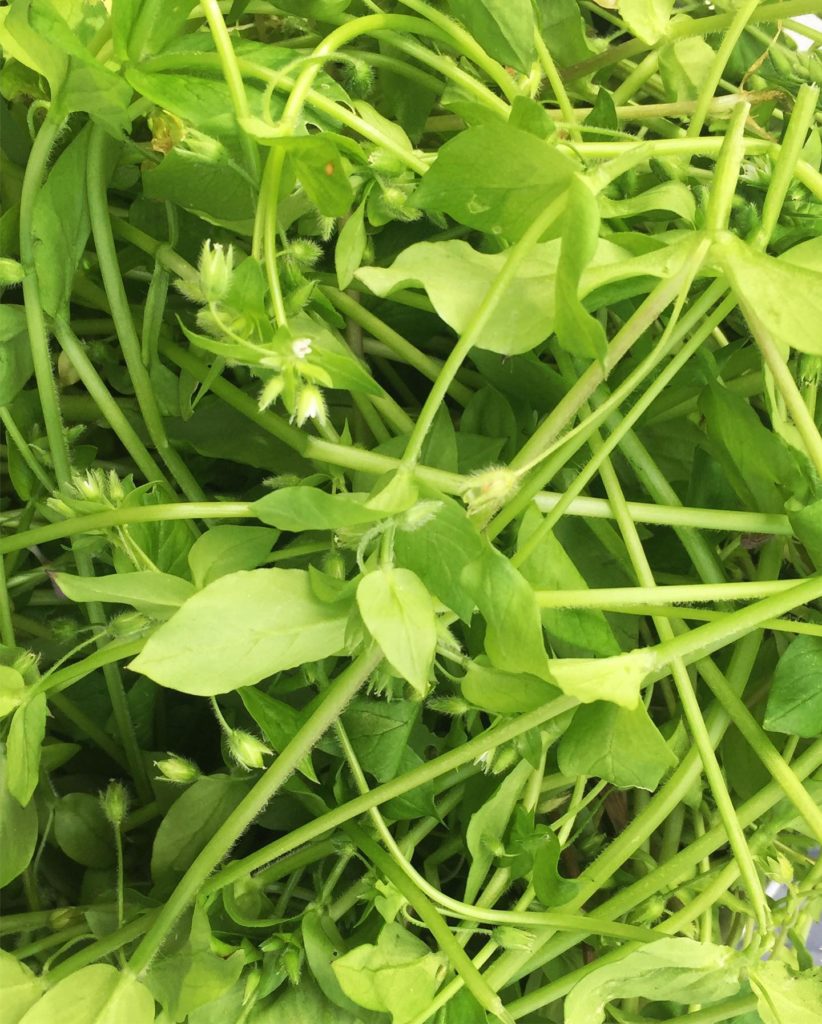
Both chickweed and deadnettle are very common, so you’ll probably find that they’ve been hiding in plain sight this whole time! If you see some, I invite you to take a little nibble, though be careful to always harvest away from polluted areas (and well-attended dog parks, if you get my drift).
